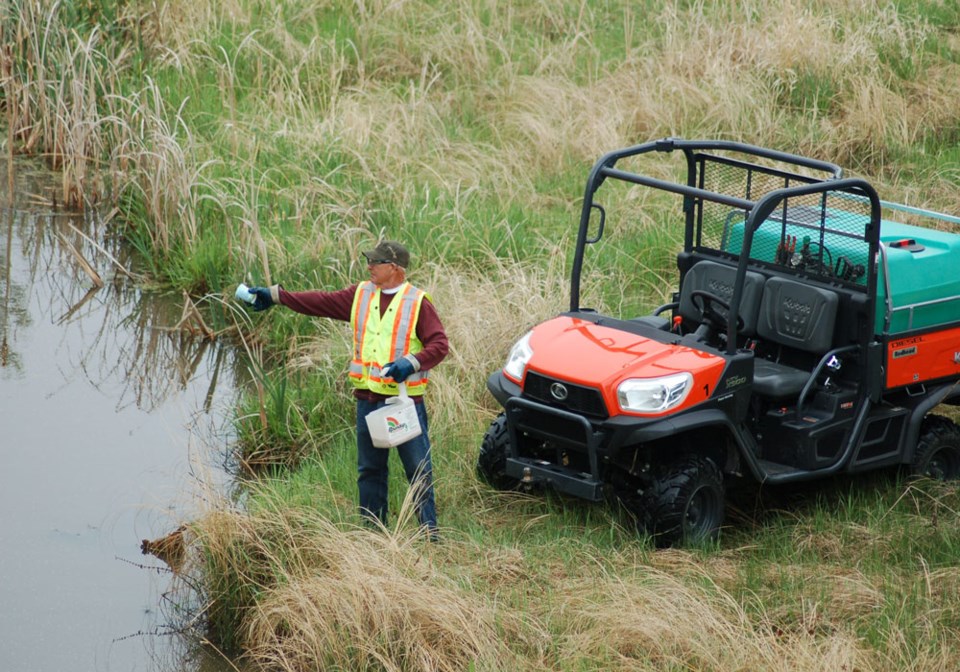The war is on.
It consists of daily battles between man and insect with the balance of power often swinging from one side to the other. That’s the nature of the fight to control mosquitoes in the Energy City.
Estevan parks manager Rod March, said Southeast Tree Care has once again been contracted to conduct the trench warfare against the pesky foes with an ambitious larvicide program that is designed to defeat the mosquitoes in their most vulnerable state … before maturity.
“They are conducting the work as in the past, doing it sector by sector,” said March, referring to the mosquito control team lead by Larry Doan and his crews who section the city into quadrants for consistent larvicide applications and control.
Doan noted the City has done significant work in the past few years in eliminating or reducing the areas where water can collect, thus reducing the opportunity for mosquito breeding and emergence since they prefer stagnant water in which to lay their eggs.
“We’re monitoring the results carefully this year to measure where the larvae counts are the highest and tracking the larvae stages,” said March, referring to the local traps that are set up to help them perform those tasks. He said the program extends as much as one kilometre past city limits, thus helping to eliminate some breeding grounds on the community’s perimeter.
No accurate counts have been taken yet, said March, but a program for tabulating numbers is in place. This will help the crews identify areas within the city that perhaps require more intense focus or more frequent visits with the VectoBac larvicide that is considered one of the most effective weapons in the war on mosquitoes.
So far, said March, there hasn’t been any one area in the city that has been earmarked as being more troublesome than another, so it’s a matter of equal and consistent treatments right through the spring and summer season and well into fall, as weather dictates.
The spreading of the larvicide is repeated consistently, and March said he will be in contact with the Ministry of the Environment with regards to mosquito counts and identification of the more troublesome species such as the Culex tarsalis.
“We’ll know what species and how many there are in each trap. We have three or four traps set up in the city just for that purpose,” he said.
The applications of larvicides is generally acknowledged as being much more efficient and safer for the public than spraying insecticides to combat the insects after they have reached adult stage.
He added that, due to the lower snow load this past winter, the mosquito situation may not be too troublesome this year, but, of course, with each passing weather pattern and with each mosquito breeding cycle, the logistics may change in a hurry.
“That’s why we always urge homeowners to get rid of their standing water in the yards,” said Doan, who noted that while the city has grown in geographic scope and population over the past four years, the mosquito population has been pretty well under control thanks to good planning by city officials and developers that have kept the low water collection spots to a minimum.
“But you know, in visiting our local parks, I see where we may have a return of a gopher problem,” said March with a chuckle.
So, it may be a simple case of exchanging the presence of one pest with another and the desire to keep both, under control.
“Yep, the gopher situation could be significant this year. We’ll have to wait a bit and see,” said March. The city’s active and passive parks are appearing to be in pretty good condition heading into the busy season, including one of the newest, Kensington Greens which had attracted some attention last year for its lack of development, but is now slated for some significant reconstruction work this summer.
“We have a contractor in place and there will be some work done on that park this summer,” said March.




